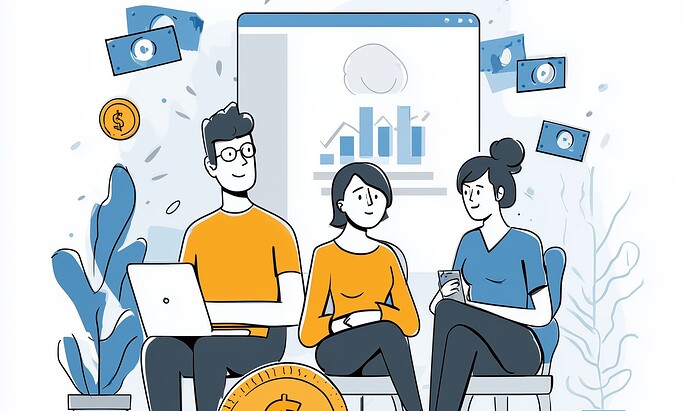Every community manager sooner or later faces the question, “What is the ROI of community initiatives you run?” (Short reference: Return on Investment (ROI) is the difference between expenses and revenue as a percentage of expenses.) Since in most cases, the main cost of a community is the community manager’s salary, let’s talk a little bit about the value a community manager brings.
How to estimate what value a community manager brings?
It’s quite simple: measure the value of a community under someone’s management and under no management at all. The difference between these two values is the value created by that person. (In fact, this is how we can evaluate anyone’s contribution to almost anything.)
Let’s go a bit further. Imagine there’s a community with a certain number of users who perform certain activities. We know the community’s history up to this point and can predict how the community will do if nothing happens. Now we hand over our community to a community manager and, after some time, can compare what we expected to happen without the community manager with what happened under their influence.
Let me emphasize that the value created will be expressed in “users”, “actions performed” and other similar units of measurement, in accordance with the metrics you choose, but not in $$$ (we will talk a bit about it at the end of the post).
From this definition it follows that there are two moments in time when a community manager can create the greatest value for the business.
1. When there is nothing yet
There’s a huge difference between “nothing” and “a small community.” It’s many times greater than the difference between “a small community” and “something more than a small community.” What’s the value of a nonexistent community? That’s right, 0! What’s 0 * 100? Zero! 0 * 1000? Zero again! So, no matter how good a company’s management is, if there’s no community, there’s nothing to get value from. But as soon as you move from 0 to at least 1, the situation changes radically. (In entrepreneurial circles, this stage is called exactly as “going from 0 to 1”.) Beyond the “small community” itself, this stage provides launch-related knowledge that is valuable to many businesses in its own right. In other words, if a company decides to try launching a community “as an experiment,” the ROI in the initial stage is positive by definition regardless of the end result.
(If I were thinking about freelancing, for sure my primary focus would be on helping companies launching communities.)
2. When there are serious issues in an existing community
If a community has issues with engagement, retention, or anything else, it means that (1) there’s a community, (2) the company’s management has a clear understanding of what’s good and what’s bad for the community, and (3) the things get measured. Most likely, such a company understands that solving the existing problem is worth the investment in finding and hiring a community manager or consultant. The ROI, if the problem is solved, is again positive by definition.
(Actually, this is the focus of our analytical platform, that with the help of ML identifies the biggest issues in a community and suggests the greatest opportunities to grow it.)
Wait, but we need to evaluate the contribution in terms of ROI in terms of $$$ not user actions or engagement?
If you know how much each active community user brings to a business, there’s no problem multiplying the two values. But there’s a catch: every business monetizes their community differently. Moreover, the same business can monetize a community in different ways, depending on the lifecycle of the community and the company itself.
For example, Stack Overflow once monetized its community through advertising, then added a recruiting website to hire developers, then began selling the forum engine as a SaaS, and now sells the content itself to AI companies. Each approach has its pros and cons. They can exist separately or together. In other words, even for a business where the community is at its core, the value created by the community depends heavily on management’s ability to identify monetization opportunities.
What’s left for a community manager? To do the best job possible in terms of increasing the number of active users, their engagement levels, retention, etc.
Just a friendly reminder that we help companies to transform their community initiatives from time-consuming guesswork into a data-driven process that delivers measurable business value. We will be happy to help you too! Send me an email! to have a chat about your community.
